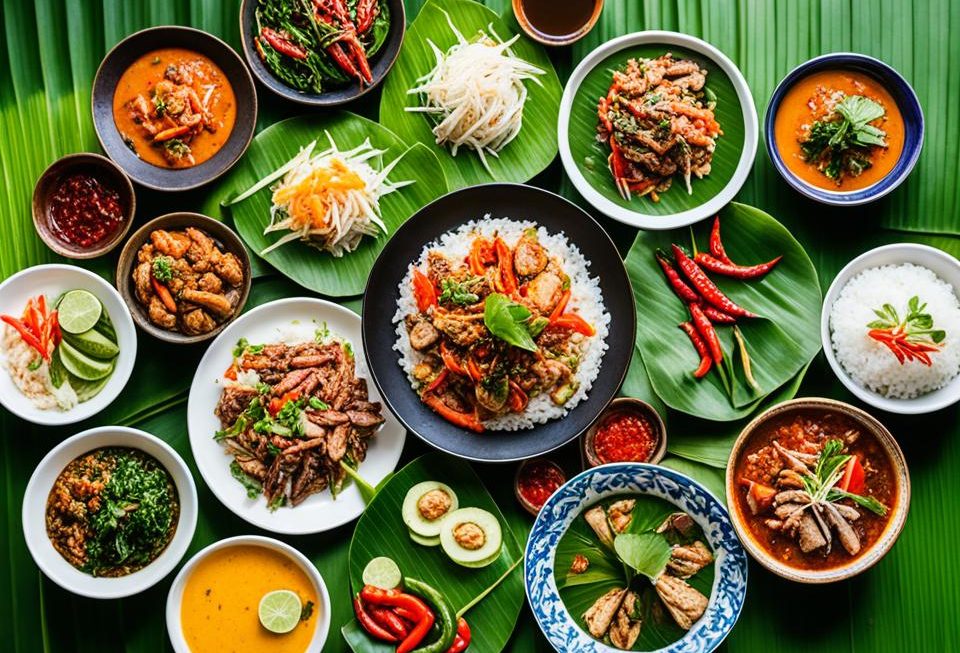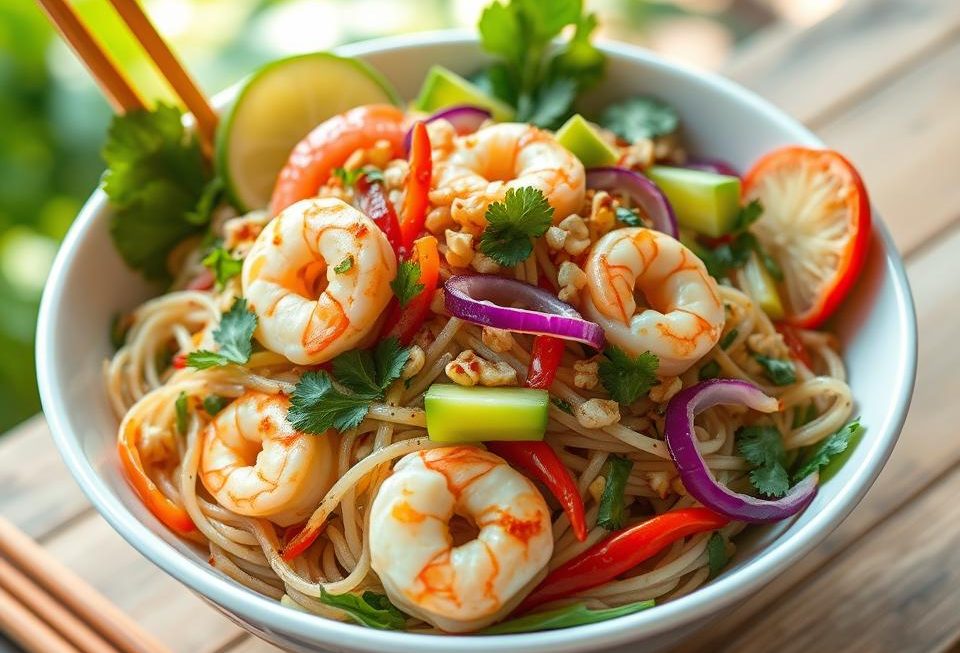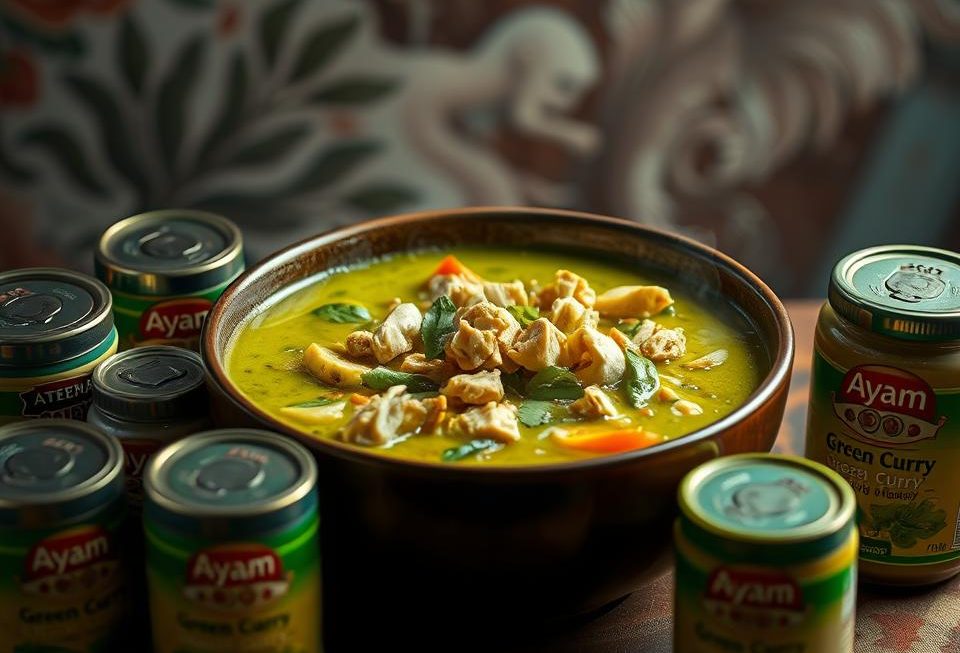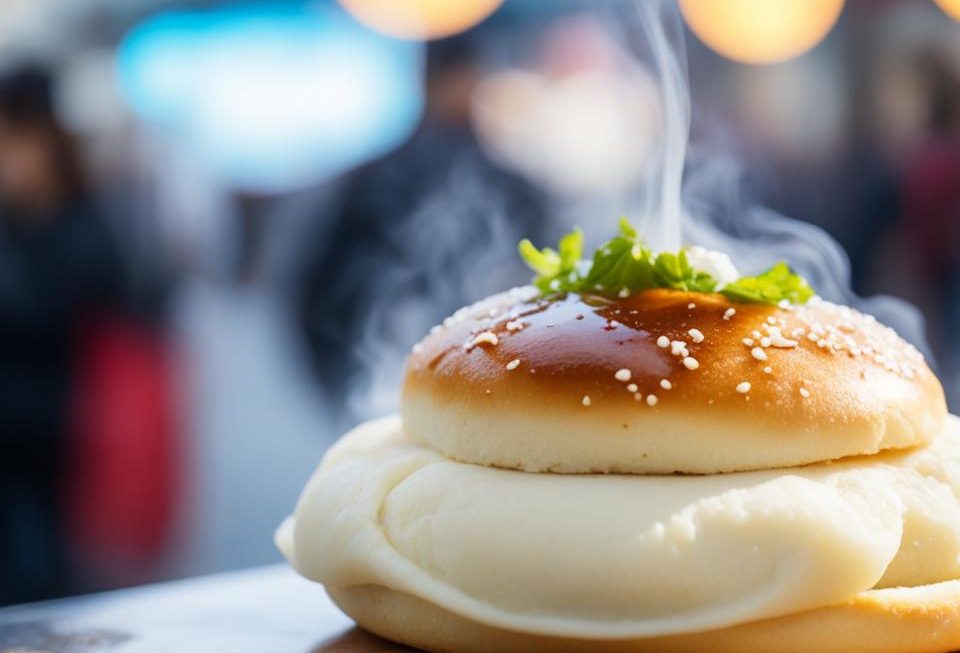Isaan food Thailand, the distinct and flavorful cuisine of Northeast Thailand, also known as the Isaan region, takes you on a culinary journey through authentic dishes, cooking techniques, and cultural traditions that define Isaan’s vibrant gastronomy. From the iconic somtam (green papaya salad) and larb (spicy meat salad) to the smoky gai yang (grilled chicken) and herbal tom saep (pork soup), you’ll discover the bold, fiery, and utterly delicious flavors that make Isaan cuisine a must-try for any food enthusiast visiting Thailand.
Read more interesting information at ::sportsnews1
Introduction to Isaan Cuisine
Isaan cuisine is the regional food of Northeastern Thailand, a culturally distinct area bordering Laos and Cambodia. The Isaan region, also referred to as Isan or Esarn, is known for its bold, spicy, and fermented flavors that set it apart from the more widely known central Thai cuisine.
What is Isaan Food?
Isaan food has been shaped by the region’s agricultural heritage, its proximity to neighboring countries, and the culinary traditions of its diverse ethnic groups, including the Lao, Khmer, and Thai-Isaan people. The unique flavors and ingredients of isaan cuisine have evolved over time, reflecting the rich cultural tapestry of the Northeastern Thai region.
Origins and Influences
The distinct isaan food thailand is a result of the region’s historical and geographical influences. The close proximity to Laos and Cambodia has contributed to the sharing of culinary practices and the use of similar ingredients, such as sticky rice, fermented fish sauce, and an abundance of fresh herbs and spices. The region’s agricultural heritage has also played a significant role in shaping the isaan cuisine, with locally grown produce and livestock featuring prominently in the dishes.
Signature Dishes of Isaan
Isaan cuisine is renowned for its iconic signature dishes that have become beloved staples not just in Thailand, but around the world. Some of the most famous Isaan specialties include:
Som Tam (Green Papaya Salad)
Som tam, the quintessential somtam of Isaan, is a vibrant and refreshing salad made with shredded green papaya, tomatoes, chilies, peanuts, and a tangy-sweet dressing. This dish perfectly encapsulates the bold and fiery flavors that define Isaan food Thailand.
Larb (Spicy Meat Salad)
Larb, also known as laab or larp, is a spicy minced meat salad that showcases the versatility of Isaan cuisine. This dish can be made with a variety of proteins, including beef, pork, chicken, or fish, and is seasoned with a blend of toasted ground rice, mint, cilantro, shallots, and a zesty lime-based dressing.
Gai Yang (Grilled Chicken)
Gai yang, the beloved gai yang of Isaan, is a succulent and smoky grilled chicken that is marinated in a blend of fish sauce, garlic, coriander root, and other aromatics. Served with sticky rice and a spicy dipping sauce, gai yang is a quintessential Isaan food Thailand experience.
Isaan Food Thailand: The Bold and Fiery Flavors
The distinct culinary identity of isaan food thailand is heavily defined by its bold and fiery flavors, which are largely attributed to the region’s abundant use of chili peppers and nam pla (fermented fish sauce).
Chili Peppers and Heat Levels
Isaan dishes often feature a wide variety of chilies, ranging from the mild, aromatic Thai chilies to the intensely spicy bird’s eye chilies. The heat level can vary greatly depending on the dish and the personal preferences of the diner. This diversity of chili peppers allows Isaan cooks to create a dynamic interplay of flavors, from subtle warmth to searing, mouth-numbing heat.
Fermented Fish Sauce (Nam Pla)
In addition to the liberal use of chilies, nam pla (fermented fish sauce) is another essential ingredient that lends its distinctive savory and umami notes to Isaan cuisine. This pungent, liquid condiment is made by fermenting small fish, typically anchovies, in salt, and is used to season a wide variety of Isaan dishes, from salads to grilled meats and stews.
The bold, fiery flavors of isaan food thailand, achieved through the harmonious blend of chilies and nam pla, are what make this regional cuisine so captivating and memorable for food enthusiasts. These flavors are the hallmark of Isaan’s vibrant culinary identity.
Isaan’s Unique Cooking Techniques
The distinct flavors and textures of Isaan cuisine are not only a product of its bold spices and fermented ingredients, but also the region’s unique cooking techniques. Two of the most prominent methods that define the Isaan food experience are grilling and smoking, as well as the use of the mortar and pestle.
Grilling and Smoking
Grilling and smoking are integral to Isaan cuisine, imparting a delightful char and smoky aroma to many of the region’s signature dishes. From the iconic gai yang (grilled chicken) to the mouthwatering moo yor (smoked sausage), Isaan chefs masterfully harness the power of live fire and smoke to elevate the natural flavors of their ingredients. This technique not only adds complexity to the dishes but also creates a distinct isaan food thailand profile that sets the cuisine apart from other regional fare.
Pounding and Mortar Pestle
The mortar pestle is an indispensable tool in Isaan kitchens, used to pound and grind a variety of ingredients into flavorful pastes and dressings. From the iconic som tam (green papaya salad) to the fragrant nam prik (chili dip), the rhythmic pounding and grinding process is crucial in unlocking the bold and complex flavors that define isaan food thailand. This hands-on technique not only imparts a distinct texture to the dishes but also allows the flavors to meld together seamlessly, creating a harmonious balance that is quintessentially Isaan.
These unique cooking methods, rooted in Isaan’s agricultural heritage and cultural traditions, are what make the region’s cuisine so captivating and unforgettable. By embracing the power of fire, smoke, and manual labor, Isaan chefs have cultivated a culinary identity that is both authentic and utterly delicious.
Regional Specialties and Local Favorites
While Isaan cuisine is renowned for its iconic signature dishes, the region also boasts a diverse array of lesser-known regional specialties and local favorites that are equally deserving of attention. Two such examples that showcase the depth and complexity of Isaan food are:
Tom Saep (Herbal Pork Soup)
Tom saep, also known as ‘herbal pork soup,’ is a beloved regional specialty of Isaan that showcases the region’s expertise in crafting flavorful broths. This aromatic soup is made by simmering slices of pork in a broth infused with a blend of fragrant herbs and spices, including lemongrass, kaffir lime leaves, galangal, and chilies. The result is a deeply savory and slightly spicy soup that is often served with steamed sticky rice, allowing diners to fully experience the harmonious balance of flavors that defines isaan food thailand.
Nam Tok (Grilled Meat Salad)
Another regional specialty that showcases the versatility of isaan food thailand is nam tok, or ‘grilled meat salad.’ This dish features slices of grilled or charcoal-roasted meat, typically beef or pork, tossed with a vibrant dressing of lime juice, fish sauce, shallots, mint, and a fiery kick of chilies. The combination of the tender, smoky meat, the tangy-spicy dressing, and the refreshing herbs creates a harmonious explosion of flavors and textures in every bite. Nam tok is often enjoyed as a standalone dish or as part of a larger Isaan-style meal.
| Dish | Key Ingredients | Flavor Profile |
|---|---|---|
| Tom Saep (Herbal Pork Soup) | Pork, lemongrass, kaffir lime leaves, galangal, chilies | Savory, slightly spicy, herbal |
| Nam Tok (Grilled Meat Salad) | Grilled or charcoal-roasted meat, lime juice, fish sauce, shallots, mint, chilies | Tangy, spicy, smoky, refreshing |
Isaan Street Food and Markets
Isaan cuisine is deeply rooted in the vibrant street food culture and lively local markets of the region. Visiting the bustling night markets and roadside food stalls is an essential part of experiencing the authentic flavors of Isaan food thailand. These dynamic hubs offer a glimpse into the culinary traditions and daily life of the Northeastern Thai communities.
Vibrant Night Markets
The isaan night markets of Northeastern Thailand are bustling with activity, drawing in both locals and visitors alike. These evening gatherings transform the streets into a dazzling sensory experience, with the aroma of grilled meats, the sizzle of woks, and the chatter of vendors filling the air. From the iconic som tam (green papaya salad) to the fiery larb (spicy meat salad), the night markets showcase the full breadth of isaan street food specialties.
Street Food Stalls and Vendors
Beyond the night markets, the isaan food thailand landscape is dotted with countless roadside food stalls and mobile vendors, each offering their own unique take on traditional dishes. These informal eateries serve as both a culinary hub and a social gathering place, where diners can savor the freshly prepared isaan street food and engage with the friendly vendors who take pride in their craft.
From the sizzling grills to the bustling mortar and pestles, the street food scene in Isaan is a testament to the region’s vibrant culinary heritage and the enduring spirit of its people. Immersing yourself in this dynamic food culture is an essential part of any isaan food thailand experience.
Ingredients and Seasonings
The unique flavors of isaan food thailand are heavily dependent on the region’s abundant use of fresh herbs, aromatic ingredients, and the staple grains of rice and sticky rice. These elements are integral to the identity of Isaan cuisine, lending it a distinct and captivating profile.
Fresh Herbs and Aromatics
Isaan food thailand places a strong emphasis on the use of fresh herbs and aromatic ingredients, which are often used in generous quantities. Some of the key herbs and aromatics found in Isaan dishes include:
- Lemongrass
- Kaffir lime leaves
- Galangal
- Mint
- Cilantro
- Thai basil
These fragrant herbs and spices not only infuse the dishes with bold flavors but also contribute to the distinct aroma that is synonymous with isaan food thailand.
Rice and Sticky Rice
At the heart of isaan food thailand are the staple grains of rice and sticky rice. Isaan cuisine is heavily reliant on these versatile and nourishing carbohydrates, which serve as the foundation for many dishes:
| Type of Rice | Characteristics | Typical Dishes |
|---|---|---|
| Rice | Long-grain, fragrant rice that is typically steamed or boiled | Larb, Namtok, Tom Saep |
| Sticky Rice | Short-grain, glutinous rice that is typically steamed in a woven basket | Khao Niaow Ma Muang, Khao Niaow Ping |
The pairing of rice and sticky rice with the bold flavors and textures of Isaan’s signature dishes is a fundamental aspect of the region’s culinary identity.
Isaan Food and Thai Culture
Isaan cuisine is deeply intertwined with the cultural traditions and social fabric of the Northeastern Thai region. Isaan food plays a significant role in the region’s festivities, celebrations, and community gatherings, serving as a unifying force that brings people together and preserves the unique identity of the isaan culture.
Traditional Festivals and Celebrations
Throughout the year, the people of Isaan celebrate a rich tapestry of festivals and cultural events that revolve around the region’s isaan food and culinary traditions. From the vibrant Bun Bang Fai (Rocket Festival) to the revered Phi Ta Khon (Ghost Festival), these celebrations are marked by the preparation and sharing of iconic Isaan dishes, highlighting the central role of food in the isaan culture.
Family and Community Gatherings
Isaan food is also deeply rooted in the community and family life of the Northeastern Thai region. Gatherings such as weddings, funerals, and other important life events often feature the communal preparation and consumption of Isaan specialties, fostering a sense of belonging and preserving the region’s culinary heritage. These shared meals and social interactions reinforce the strong isaan culture and its traditions.
Exploring Isaan’s Diverse Regions
The Isaan region of Thailand is a vast and varied area, encompassing several distinct provinces, each with its own unique culinary traditions and regional specialties. Exploring the different parts of this northeastern region can uncover a wealth of gastronomic delights that showcase the remarkable diversity of isaan food thailand.
Northeastern Provinces
The Isaan region is home to several provinces, each with its own unique culinary identity. Some of the notable provinces within isaan regions include Nakhon Ratchasima, Udon Thani, Khon Kaen, Ubon Ratchathani, and Sakon Nakhon, among others. Each of these isaan provinces has developed its own signature dishes, cooking techniques, and traditional ingredients that contribute to the vibrant tapestry of Isaan cuisine.
Regional Variations and Specialties
As you explore the different parts of the Isaan region, you’ll discover a wide array of regional variations and specialty dishes that showcase the incredible diversity of isaan food thailand. For example, the northeastern province of Ubon Ratchathani is known for its mouthwatering khao niaow ma muang, a delectable sticky rice and mango dessert. Meanwhile, Nakhon Phanom, another Isaan province, is celebrated for its delicate and aromatic fish-based dishes, such as pla chon neung manao, a steamed snakehead fish in a tangy lime dressing.
Exploring the distinct culinary traditions of each isaan region and province can be a truly rewarding experience, offering a deeper understanding and appreciation for the rich tapestry of Isaan cuisine.
Isaan Food Thailand: Authentic Restaurants and Dining
Discovering the true essence of Isaan food in Thailand often involves seeking out reputable restaurants and eateries that uphold the region’s culinary traditions. However, it’s also important to be mindful of the local dining etiquette and customs when immersing oneself in the Isaan dining experience.
Dining Etiquette and Customs
Isaan cuisine is deeply rooted in the social and cultural fabric of Northeastern Thailand, and this is reflected in the dining customs and etiquette that accompany it. When enjoying Isaan food, it’s customary to share dishes family-style, with everyone at the table partaking in the various menu offerings. Sticky rice is a staple accompaniment, often served in small baskets or bowls for communal sharing.
Proper table manners in Isaan dining emphasize the use of one’s hands to pick up and eat the food, rather than utensils. This hands-on approach allows diners to fully experience the textures and flavors of the dishes. It’s also common to see Isaan restaurants providing a small bowl of water and a hand towel for guests to cleanse their fingers between courses.
Recommended Restaurants and Eateries
For an authentic Isaan dining experience in Thailand, consider seeking out the following renowned restaurants and eateries:
| Restaurant | Location | Signature Dishes |
|---|---|---|
| Laab Udon | Udon Thani, Isaan | Larb, Isaan-style salads |
| Raan Jay Fai | Bangkok, Thailand | Som Tam, Grilled Chicken |
| Baan Phad Thai | Khon Kaen, Isaan | Tom Saep, Sticky Rice |
| Laan Namprik | Nakhon Ratchasima, Isaan | Nam Tok, Grilled Meats |
These establishments not only serve authentic Isaan cuisine but also provide an immersive dining experience that celebrates the region’s rich culinary heritage and vibrant culture. Whether you’re seeking out the iconic flavors of Isaan or exploring the lesser-known regional specialties, these recommended restaurants are sure to satisfy your cravings for the bold and captivating tastes of Northeastern Thailand.
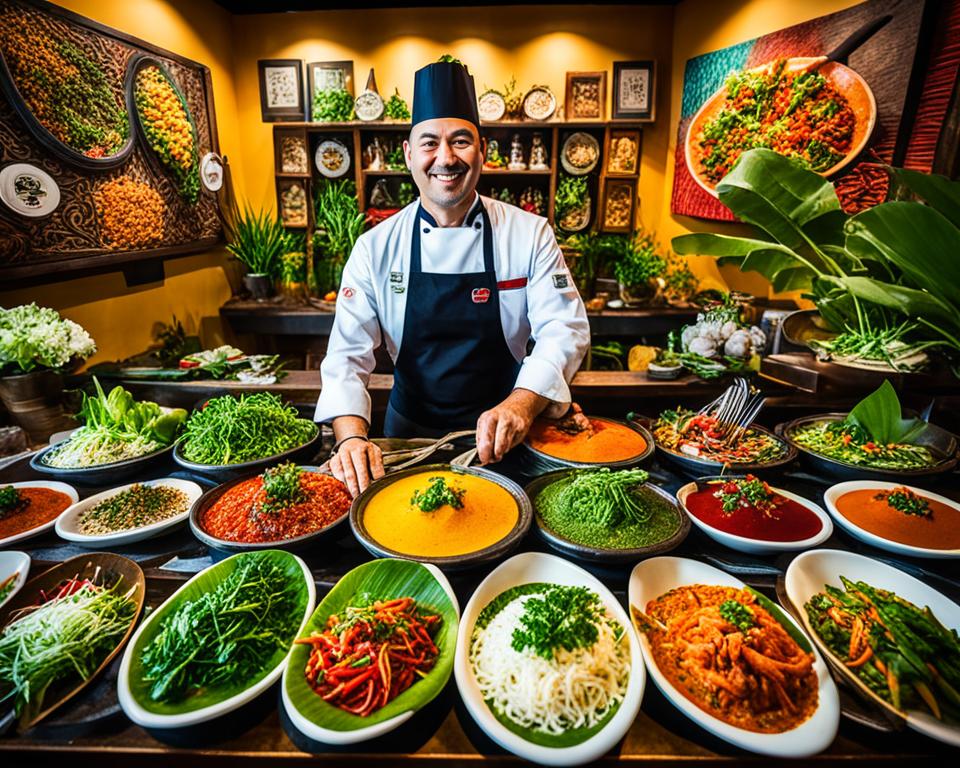
Health Benefits of Isaan Cuisine
In addition to its bold and tantalizing flavors, Isaan food Thailand also offers numerous health benefits, making it a highly nutritious and well-balanced regional cuisine. The fresh, locally-sourced ingredients and the careful balance of flavors in Isaan dishes contribute to their exceptional nutritional profile.
Fresh Ingredients and Nutrition
Isaan cuisine is renowned for its reliance on fresh, seasonal produce, including a wide variety of herbs, vegetables, and fruits. These fresh ingredients are not only flavorful but also packed with essential vitamins, minerals, and antioxidants. For instance, the iconic somtam (green papaya salad) is rich in vitamin C, fiber, and other beneficial nutrients. Similarly, the protein-rich larb (spicy meat salad) and the grilled gai yang (chicken) provide a balanced source of lean protein, making Isaan food a nutritious choice.
Balancing Flavors and Moderation
Isaan cuisine is known for its bold, spicy flavors, but it also emphasizes the importance of balancing different taste profiles, such as sour, salty, and sweet. This balance of flavors, along with the use of fermented ingredients like nam pla (fish sauce), can aid in digestion and promote overall gut health. Additionally, Isaan dishes are often served in moderate portions, encouraging a healthy approach to eating and avoiding overconsumption.
By embracing the fresh, nutrient-dense ingredients and the well-balanced flavors that define Isaan food Thailand, one can enjoy the bold and satisfying tastes of this regional cuisine while also reaping the numerous health benefits it provides.
Isaan Food at Home
For those who can’t travel to Thailand, bringing the authentic flavors of isaan food thailand into your own home is entirely possible. With the right ingredients and resources, you can recreate these vibrant dishes and immerse yourself in the culinary traditions of Northeastern Thailand.
Recreating Authentic Flavors
The key to recreating the bold, complex flavors of isaan cooking at home lies in sourcing the right ingredients. From fragrant lemongrass and galangal to pungent fish sauce and vibrant chilies, having access to the essential Isaan pantry staples is crucial. With a little experimentation and a willingness to embrace the unique flavor profiles, home cooks can learn to masterfully replicate the signature tastes of Isaan cuisine.
Isaan Cooking Classes and Resources
For those looking to delve deeper into the art of isaan cooking classes, there are numerous resources available both in Thailand and around the world. Attending hands-on cooking workshops led by Isaan culinary experts can provide invaluable insights into traditional techniques, ingredient pairings, and the cultural context that shapes this remarkable regional cuisine. Online tutorials, cookbooks, and even social media communities can also serve as excellent sources of inspiration and guidance for the aspiring Isaan home cook.
Isaan Food and Sustainable Practices
Isaan cuisine in Thailand is not only celebrated for its bold and captivating flavors, but also for its deep-rooted commitment to sustainable practices and traditional food systems. The culinary heritage of the Isaan region reflects a profound respect for the land and local resources, showcasing a harmonious relationship between the people, their environment, and the food they produce.
Local Sourcing and Farming
At the heart of Isaan cuisine lies a strong emphasis on locally sourced ingredients, often grown and harvested by small-scale farmers within the region. The Isaan people have long been stewards of their land, practicing sustainable farming techniques that promote biodiversity, soil health, and the conservation of natural resources. From the diverse array of fresh herbs and vegetables to the heritage breeds of livestock, Isaan food is intrinsically linked to the region’s agricultural traditions and the preservation of its unique ecosystems.
Traditional Preservation Methods
Isaan food culture is also characterized by its reliance on traditional preservation methods, which not only enhance the flavors of the cuisine but also contribute to its sustainability. Techniques such as fermentation, pickling, and drying have been passed down through generations, allowing the Isaan people to make the most of their local produce and minimize food waste. These time-honored practices not only reduce the environmental impact of food production but also infuse Isaan dishes with a depth of flavor that is uniquely their own.
| Sustainable Practices in Isaan Cuisine | Benefits |
|---|---|
| Local Sourcing and Farming | Supports small-scale farmers, promotes biodiversity, and reduces the environmental impact of food transport. |
| Traditional Preservation Methods | Enhances flavor, reduces food waste, and minimizes the need for energy-intensive processing or refrigeration. |
| Reliance on Seasonal and Regional Ingredients | Ensures the freshness and nutritional value of produce, while aligning with the natural rhythms of the land. |
| Holistic Approach to Food Production | Integrates sustainable practices throughout the entire food system, from cultivation to consumption. |
By embracing these sustainable practices, Isaan cuisine in Thailand not only preserves its culinary traditions but also contributes to the long-term resilience and health of the region’s food systems. This holistic approach to food production and consumption aligns with the growing global demand for more conscious and responsible gastronomic experiences, making Isaan food a shining example of how regional cuisines can thrive while nurturing the environment and local communities.
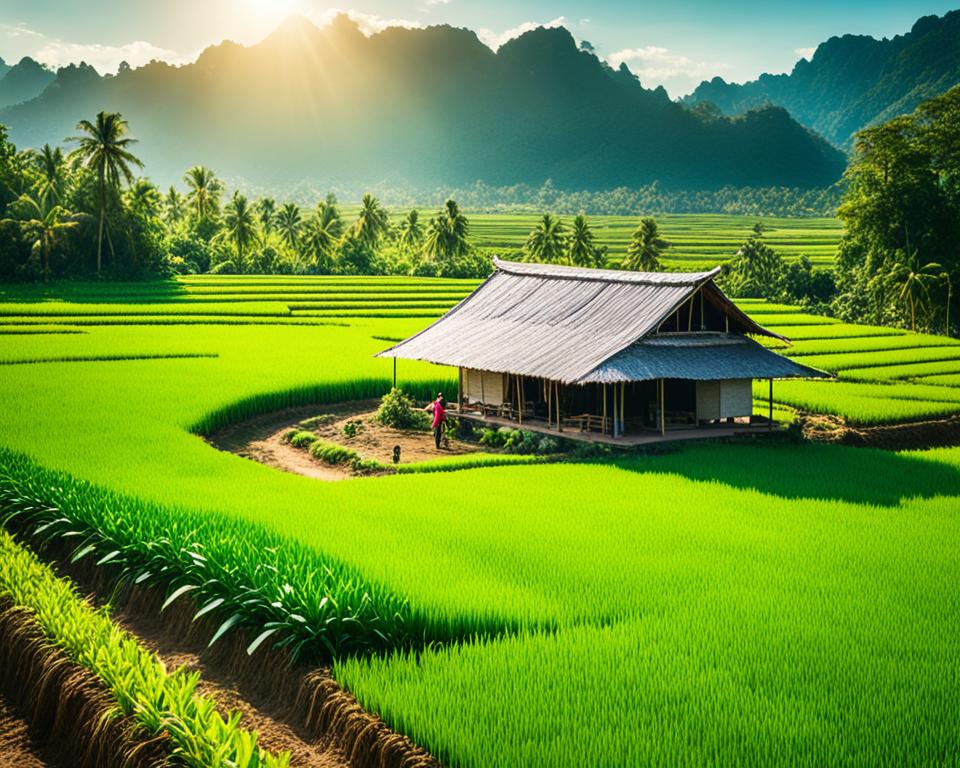
Fusion and Evolution of Isaan Cuisine
While Isaan cuisine is deeply rooted in tradition, it has also evolved and adapted over time, embracing modern interpretations and culinary innovations. This dynamic interplay between the old and the new has helped to keep isaan food thailand relevant and appealing to contemporary palates.
Modern Interpretations and Twists
Chefs and culinary enthusiasts are increasingly experimenting with Isaan flavors, incorporating them into new and innovative dishes. From deconstructed versions of classic isaan cuisine evolution staples to fusion creations that blend Isaan elements with international cooking styles, these modern interpretations are breathing fresh life into the region’s gastronomic heritage.
Isaan Food Trends and Innovations
The evolving food landscape in Thailand has also seen a surge in isaan food trends, as the bold and vibrant flavors of Isaan cuisine gain popularity both domestically and globally. Artisanal food producers are reviving traditional fermentation techniques, while mixologists are crafting creative cocktails inspired by Isaan’s signature ingredients.
As Isaan food continues to captivate the hearts and palates of food enthusiasts worldwide, it is clear that this distinct regional cuisine is poised to play an increasingly influential role in shaping the future of Thai gastronomy.
Conclusion
The Isaan food Thailand represents a rich and vibrant culinary tradition that is deeply rooted in the history, culture, and geography of Northeastern Thailand. From the bold and fiery flavors of iconic dishes like som tam and larb to the unique cooking techniques and sustainable practices that define Isaan cuisine, this regional gastronomy offers a truly immersive and authentic experience for food enthusiasts.
Through our exploration of the diverse Isaan food Thailand, we have uncovered the region’s distinct flavors, cooking methods, and cultural significance. The Isaan cuisine is a testament to the resilience and adaptability of the Northeastern Thai people, seamlessly blending traditional culinary wisdom with modern influences to create a dynamic and ever-evolving gastronomic landscape.
As we bid farewell to this culinary journey, we hope that you have gained a deeper appreciation for the complex and captivating world of Isaan food Thailand. Whether you have the opportunity to savor these flavors in the bustling night markets of Isaan or recreate them in your own kitchen, we encourage you to continue exploring and embracing the rich tapestry of this remarkable regional cuisine.
